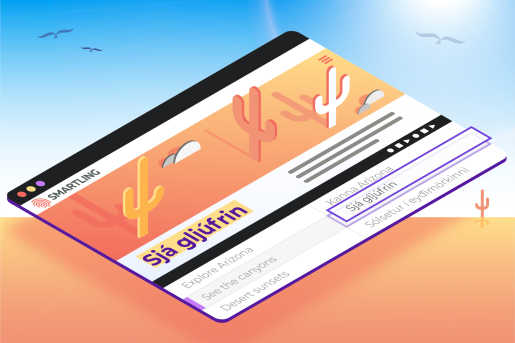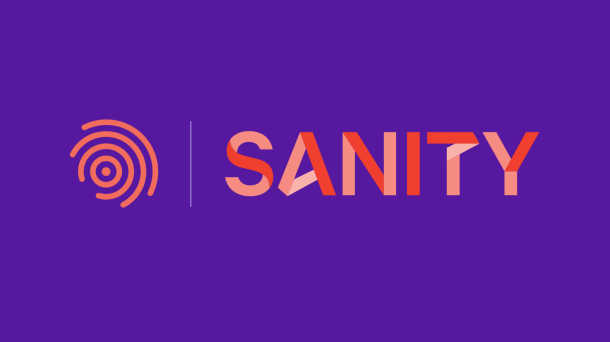While the last year or so has taught us the importance of digital presence, it also has left us with many questions about how we will be meeting our customers moving forward.
How will buyer behavior evolve? What makes companies competitive? What should we keep top of mind as we try reaching global customers through localization?
Lynn Nguyen, Account Manager at Smartling, shares what to think about as we move forward with localization in today’s world.
Preparing for Life Ahead
Although change can be daunting, it creates opportunities. As Helen Keller said, “Optimism is the faith that leads to achievement.”
What driving forces are shaping the global economy and the world of commerce? Let's briefly reflect on the impact that this change has on both your digital presence and your translation program.
In the last year, we’ve generated digital transformations and established new ways of life and business in a very short amount of time. What we saw was the compression of a year's worth of digitalization in a matter of weeks. As a result, we've already seen a massive uptick in global commerce, and the rules of online engagement for customers and prospects have been rewritten.
In the B2C space, online spending increased by 33% from 2020. In the United States, this level of spending accelerated e-commerce growth by two years. On the B2B side, this meant that buyers and sellers had to adopt new ways of working, many of which have already redefined how your company does business.
Online events are a great example of how businesses have adapted to remote work. Sustained by the fact that over 80% of events organized have reached a wider audience via virtual events, this will have a lasting impact on how companies connect with their prospects and customers.
Up Next: From Surviving to Thriving
In the past year, actions were taken out of necessity and in an effort to survive. The next phase will still require agility, but it will start to shift from “surviving” to “thriving.” Let's boil this idea down to three key themes and look at it from the localization perspective.
1. Managing Pent-Up Demand
As the adage goes, history repeats itself. A great example of massive consumer demand being unleashed harkens back to the United States at the end of the second world war and its impact on the auto industry. In 1943, the entire auto industry sold only 139 cars.
Two years later, the war ended, and tremendous economic growth ensued. Americans put to use the savings they had accumulated in wartime. Five years later, by 1950, carmakers were producing more than 8 million vehicles a year.
Recently, an excess accumulation of savings has also taken place. Nearly $3 trillion worth of savings were amassed in the first nine months of 2020 across the world's 21 most wealthy nations.
We have already seen incredible signs of rebounding, with more to come. While it's exciting and encouraging that people are ready to spend, it's essential to think about how they will be spending. Spurred by the lasting safety and health concerns, a whopping 87% of consumers say they would now prefer to shop in stores with contactless payment options.
The biggest opportunity will be to meet customers at their point of need and comfort. Given the rise of contactless payments, curbside pickup, etc., the second step is to reconsider how translation factors in when the world reimagines how consumers want to do business.
Ultimately, there will be new opportunities to generate revenue and new mediums in which to capture them. To capitalize on these opportunities:
- Invest in a tech stack that enables you to share your content quickly across various customer touch points.
- Ensure that your plans include a translation strategy to speak to all buyers.
- Reflect on your core conversion points and how revenue will be impacted if language support doesn’t exist.
As a result of this digitalization, a greater part of the world is now accessible. Think through your new customer journey and how locale support can make a difference.
Successful localization requires a solid foundation, which companies can tweak as they enter different markets or approach new buyers. This is where the upfront investment in translation assets like style guides, glossaries, clean translation memory, etc., are significant in ensuring a continuous and satisfactory brand experience in the global market.
Having a solid foundation of translation assets means that no matter how, when, or where in the world a customer experiences a brand, they're experiencing the same underlying message. It's this consistency across every touchpoint that helps build a brand and brand loyalty.
2. Buyer Behavior Predictions
After thinking about these channels and the need for an associated translation strategy, the next central element is determining what will drive buyer behavior.
While having a customer-first mindset is not a cutting-edge concept, it has taken on a new meaning, as companies are tasked to meet their customers at their point of need. But what do you do once you get there? You personalize.
With the advent of online shopping, buyers gained more optionality when making a purchase. This advancement was exciting for the consumer, but it also meant that the level of advertising noise increased. The ability to slice through this noise is lucrative and is driving companies to return to personalization.
Many of the markets in which our customers compete are becoming increasingly crowded. So personalization done well is a point of differentiation. As marketing, customer engagement, and loyalty strategies evolve and personalization becomes table stakes, it's important to remember that nothing is more personal than speaking someone's language.
And, of course, translation within personalization is way more than speaking the language. Localization always has far-reaching implications related to currency, merchandising, distribution, etc., so it’s essential to do your due diligence.
To make your mark on new buyers and drive conversions and loyalty, you need to understand regional habits and motivations. Your translation team can aid market research. Translators can offer phenomenal local insights, and they should not be overlooked as a resource.
Defining how your users and prospects navigate their journey with your organization is critical. It likely changes from country to country and across age demographics as well.
In addition, what seems to be underrated yet unanimous is the value of addressing online reviews. Reviews are a great way to get customer feedback and have become an essential part of what empowers the buying process. Due to the scale and occasionally brief nature of reviews, this is a great place to deploy machine translation to allow potential buyers greater insight into your organization.
3. Digital Presence Expectations
The next step is to ensure what is under the hood is secure. In both B2B and B2C environments, there are mounting expectations of excellence. Every day, consumers are becoming accustomed to innovation, speed, and security.
More business leaders are investing in infrastructure, operations, and security to ensure that the physical and digital products perform at the highest level and generate repeat business. This comes into play most immediately for translation and localization on these three fronts:
- SEO: Discoverability in the new market demands a nimble SEO strategy. The ability to keep up with the demands of customers alongside the risks posed by software vulnerabilities continues to move at a fast pace.
- Scalability, Reliability, Security: When thinking about how to scale reliably and securely manage and deliver translations, Smartling is proud to be the leader in our space.
- Data: Infrastructure investments are booming, but data remains the most important thing to get right. Data generation and collection are exploding, being led by billions of people now able to access the internet.
It's amazing what can and has been done with a corpus of data, but it also has some infamous drawbacks.
Getting data right is critical, but getting data wrong is lethal. On one hand, there's the level of acceptance from some who are willing to exchange data for perks. But on the other, legislation like GDPR and CCPA was created for a reason. Data privacy is rightfully on the mind of consumers who are after high-quality experiences but not at the risk of their personal or professional assets.
Companies are expected to step up and take the appropriate steps to ensure data is securely managed and protected. Historically, customers needed to exhibit their loyalty to the brand. Now, the brand must show loyalty to the customers.
This is where translation comes back into view. The expectation for all organizations is to be honest about customer data and privacy policies and practices. Within that, you need to make that information available to your relevant locales. Data privacy rules and regulations are constantly evolving. Make sure that you are poised to tackle global communications as those policies shift.
We've covered quite a bit of ground, but this is an exciting topic. There will be many learnings in the coming weeks, months, and years, but those who are open-minded and optimistic about these shifting sands will certainly thrive.
The only thing constant is change. Smartling looks forward to being on this journey with you and enabling your success. You can book a meeting with us here whenever you’re ready to learn more about how we can help.






